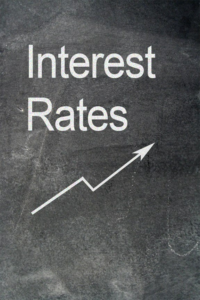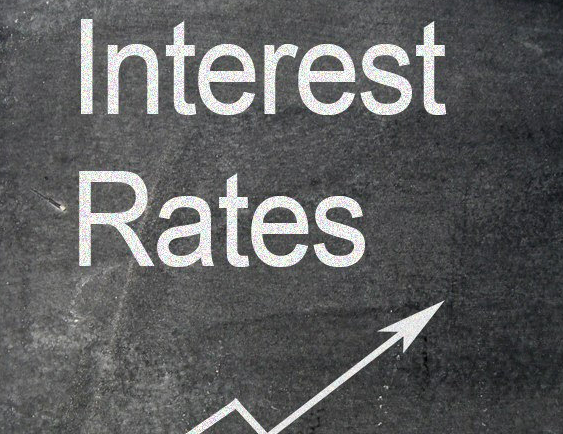22 March 2018
Great ready for a rate rise.
Reasons for delay are fast disappearing.
By Frank O’Nomics
 “This tape will self destruct in 5 seconds”. No, this is not the economics of Mission Impossible but an early acknowledgement of the dangers of putting out a rate view on the morning of an MPC meeting. Like most commentators I have to admit that an imminent rate rise is unlikely, particularly as the Bank prefers to time rate adjustments for Inflation Report releases – suggesting that the most likely time for a change would be May. However, recent developments, particularly those regarding developing agreements on our EU withdrawal, together with healthier public finances and rising wages, suggest that the reasons for procrastination are now negligible and sound central bank policy would be action sooner rather than later.
“This tape will self destruct in 5 seconds”. No, this is not the economics of Mission Impossible but an early acknowledgement of the dangers of putting out a rate view on the morning of an MPC meeting. Like most commentators I have to admit that an imminent rate rise is unlikely, particularly as the Bank prefers to time rate adjustments for Inflation Report releases – suggesting that the most likely time for a change would be May. However, recent developments, particularly those regarding developing agreements on our EU withdrawal, together with healthier public finances and rising wages, suggest that the reasons for procrastination are now negligible and sound central bank policy would be action sooner rather than later.
The simplest justification lies in the Bank’s mandate. They are obliged to target inflation of 2% over the medium term. This week CPI came back to 2.7% from 3% due to falling petrol prices, but has been above 2% for over a year, and Governor Carney will not want to write another letter to the Chancellor explaining a move back above 3% (which he would be obliged to do). Much of the overshoot was explained away by the post-Brexit vote reaction of sterling, and the currency rally this week may give some hope for moderation. However, there are plenty of other factors that will ensure that inflation remains at a high level for some time to come (gas and insurance prices in particular) and the most closely monitored portents of inflation doom, wages, have long been threatening to turn up. The level of wage growth this week jumped up to 2.6%, its highest level since late 2016, and it is remarkable that an unemployment level at its lowest for over 40 years (4.3%) has not translated into even higher pay settlements. This week’s data will not have escaped the MPC, who should be looking to be pre-emptive rather than reactive in seeking to contain wages by raising interest rates.
Other recent justifications for a rate rise have come first from the improvement in public finances, demonstrated by the “Tigger-ish” demeanour of the man formerly known as Spreadsheet Phil. Estimates of the potential spending undershoot vary but a figure of around £11bn seems possible. We will have to wait until November to see the extent to which fiscal policy will become more accommodative, but the MPC may wish to tweak monetary policy in anticipation. The second development came this week with the basis of an agreement announced regarding the terms and timing of our departure from the EU. A big part of the rationale for not raising rates had been not wanting to undermine fragile confidence given the high level of uncertainty. If that uncertainty is fading (it is clearly early days) then so are the reasons for delaying a rate rise. Further, if growth has been constrained by low business investment due to the uncertainty, there is a now risk of a significant jump in investment, which could prove inflationary. The pro-leave “Economists for Free Trade” see leaving Europe as leading to a 4% growth boost. The more impartial IFS don’t expect the Brexit deal that has been tentatively struck to meaningfully reduce consumer prices. They see even a full abolition of current tariffs as cutting prices by just 1.2% – not much when compared to the 2% increase after the Brexit vote.
It is not as if elements within the MPC are not well disposed to a move. Mark Carney thinks that a good Brexit deal would be a boost to growth and last month the MPC said that rates might need to rise “somewhat earlier and by a somewhat greater extent”. Since then even the normally dovish deputy governor Sir Dave Ramsden, who voted against the November rate rise, has moved towards the rate rise camp. If this underlying view pervades then the arguments for waiting until May to move become decidedly slim. The public would appear to concur – with almost 50,000 people trying to escape the consequences of rising rates in January alone.
There are of course arguments for doing nothing. It may well be that, if they wait long enough, inflation will fall back into line. This will be highly dependent on international drivers and with four rate rises in the US now forecast for this year, and an end to monetary easing in Europe, those drivers are likely to be supportive of a UK rate rise. There are also some data sets that indicate that the economy is not that robust. Profit warnings have hit a 2-year high, mostly driven by retailers. Growth in consumer spending is at its lowest level in 5 years and is expected to fall from 1.8% last year to 1.1% for 2018. This is causing very disappointing retail sales, up in volume terms only 1.6% y/y, with daily reports of yet another high street chain in trouble. Nevertheless Q4 GDP was still 0.4% q/q despite the overhang of Brexit uncertainty, so while the economy as a whole may be lagging other developed nations, we are nowhere near a recession.
Put simply, interest rates remain at very accommodative levels. Such levels were imposed for reasons of emergency following the financial crisis. Those reasons are no longer valid – the banking industry for one is not in danger of collapse – and a return to a normal level, which many would see to be around 2%, is now appropriate. Making such a move in one swoop would be dangerous, but there is no reason to delay a start. At the very least the Bank will be creating some space to provide support in the future if there were to be an economic downturn. It is hard to argue that a small rate rise now would be the cause of that downturn.
Some economists like to make a name for themselves by regularly going against the consensus. Get that right once and you are lauded as a sage. This is not such an attempt, but if rates do rise earlier than expected, and we see more than just two moves this year, I might just allow myself a secretly smug smile.


